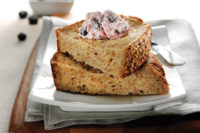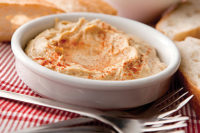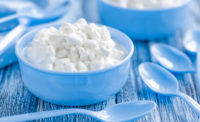Cultural studies
Or they could double down on the probiotic cultures that made yogurt such a functional archetype in the first place. The benefits of probiotics range from improved digestion to immune support. “Consumers are just beginning to make the connection that good digestive health strengthens the immune system and promotes overall good health,” Steele said.
She said that yogurt manufacturers like Dannon have raised the awareness of the digestive benefits of probiotics. But, “there’s still education to be shared to help broaden consumers’ understanding of probiotics’ benefits to digestive and immune health. Sharing the science behind the ingredients and showing proven efficacy can go a long way toward getting consumers to understand the value of a strong immune system and a healthy digestive system,” Steele said.
And given multiple studies showing that specific probiotic strains can reduce bloating and cold symptoms, there is genuine promise behind probiotic-rich dairy foods’ benefits.
For probiotics to deliver, they need to be added at a particular level of potency, as well as remain live and active, Steele warned.
Researchers have established efficacious levels for different strains and purposes, and probiotic users should work with their suppliers to target the levels most appropriate for their applications.
Suppliers can also help dairy processors manage environmental conditions in the applications themselves to better sustain the probiotics. Among the biggest challenges to keeping cultures live and active are low pH and high temperature. Steele said that for probiotics to survive processing, they should be added at a point in the process when there are no more heating steps and the product has been cooled. Distribution and storage temperatures should remain in the refrigeration range, too. And if processors can adjust pH above 3.8, they’ll “greatly” enhance survivability, she said. At lower pH levels, high overages may be necessary to achieve desired shelf life.
Of sturdier fiber
Other factors that can affect probiotic survival include the application’s water activity, its oxygen content, the presence of metabolic carbohydrates, mechanical stress during processing, inoculation practices and the effects of additives like colors, flavors and salt. That’s a lot for a manufacturer to consider, and it may make working with low-maintenance prebiotics feel like a breeze.
Generally speaking, prebiotics are soluble fibers that go undigested but feed the probiotics they often appear with. But even though we can’t digest them, that doesn’t mean they don’t do us any good. As soluble fiber, prebiotics help top off our intake of this nutrient of concern, singled out in the latest USDA Dietary Guidelines for Americans because we don’t get enough of it. And prebiotics confer the same heart-disease reduction risk that has earned soluble fiber in general an FDA-approved heart-health claim.
And as Americans seize on satiety as an elusive silver bullet for trimming pounds, prebiotics may have something to offer.
“Because of the societal need for weight management, the benefit of satiety is very appealing. Ingredients that provide a ‘fullness’ effect and digestive health benefits are doubly appealing” Steele said.







